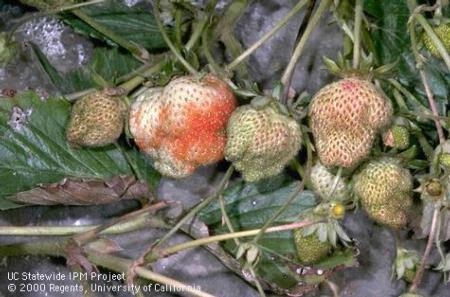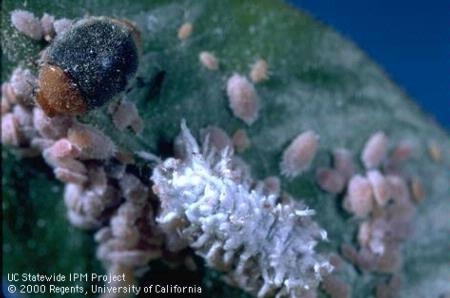- Author: Chris M. Webb
On Wednesday, September 7 from 7:30 am – 12:30 pm, UC Cooperative Extension Farm Advisor Oleg Daugovish will hold the 10th Annual Strawberry Production Meeting in Ventura County.
The meeting will be presented in English with simultaneous interpretation into Spanish. There is no cost to attend.
Scheduled topics include:
- Southern California strawberry research update: varieties and production.
- Investigation of Macrophomina and Fusarium spp., including research update on biology and management, and results from 2010-2011 non-fumigated field trials.
- Fungicide evaluations in strawberry.
- Lewis mite, thrips and Lygus research update.
- Update of herbicide efficacy and safety for nutsedge control in strawberry.
- California Strawberry Commission update on regulatory research inssues in strawberry production.
Continuous education credits have been requested from DPR.
Lunch will be provided. Details can be found here. To register, request special arrangements, or to ask questions please contact Oleg by email or by phone at (805) 645-1454 by August 31.

- Author: Chris M. Webb
UC’s Nursery and Floriculture Alliance has an upcoming educational opportunity designed to improve water quality and quantity in and around nursery and floriculture production locations.
Scheduled topics include:
- Review of key plant physiological concepts
- Essential plant nutrients and nutrient disorders
- Plant symptoms and deficiencies
- Environmental and cultural practices that may cause nutrient disorders or reduce the efficiency of nutrient uptake
- Fertilizer Best Management Practices, including the appropriate use of specific types and formulations
- Irrigation systems and infrastructural considerations to optimize water use while minimizing or eliminating water runoff from production facilities
Continuing education units are available.
The upcoming class will be held in Spanish on June 23, in Azusa California. Other classes throughout the state can be found on UC’s Nursery and Floriculture Alliance website.

- Author: Chris M. Webb
The February 2011 issue of UC IPM’s Green Bulletin has many practical and relevant articles for pest management professionals and pesticide applicators.
The featured article is titled, Ways to calibrate spray application equipment. Illustrations, conversions, and formulas needed to apply the proper amount of pesticide for any given area are included. Applying only the recommended amount of chemicals may reduce the amount of pesticides that runoff or leach into groundwater. Precision can also save applicators time and money.
Other articles in this addition may also appeal to home gardeners. Common turfgrass species provides text, photos and illustrations to help identify turfgrass species. Guide to common weeds in lawns in California features photos and text of the eight most common lawn weeds found in California. Brief general management instructions are also included along with a link for more detailed information.
The Ask the Expert! section provides an assortment of information including why people should never wear cloth hats or caps while spraying pesticides. Do you know why? The cloth hats can absorb pesticides and keep them on your skin. If you wear a hat while spraying be sure it is made of plastic or another material which does not absorb water.
Common turfgrass species and Guide to common weeds in lawns in California are available in Spanish.

- Author: Chris M. Webb
The UC Statewide IPM Program has a collection of free training modules available online. It is anticipated additional courses will be added in the future. Current classes are as follows:
For Pest Management Professionals and Pesticide Applicators
- Urban Pesticide Runoff and Mitigation provides information on pesticides, their impact on our water resources, and practical solutions for reducing runoff. Continuing Education Units (CEUs) are available from the Department of Pesticide Regulation (DPR) after completion of this course.
- IPM — A Solution for Reducing Pesticides / Water Quality: Pesticide Properties
- The Impact of Pesticides on Water Quality / Mitigating Urban Pesticide Runoff
- Water Quality and Mitigation: Bifenthrin and Fipronil
- Maintenance Gardener Pesticide Applicator Exam Preparation Course will help maintenance gardeners prepare to take the California Department of Pesticide Regulation certified applicator (QAC) exam in category Q.
For Retail Nurseries, Garden Centers and others who advise home gardeners about pests and pesticides
- Introduction to Pesticides for Retail Employees provides training for employees and others who advise consumers about home and garden pesticides.
- Moving Beyond Pesticides—Environmentally Safe Tools for Use in an IPM Program for Retail Employees explains the best tools and products for solving pest problems. Includes a basic overview of Integrated Pest Management and diagnosing pest problems.
These course can be accessed at the UC IPM website. Some of the materials are available in Spanish.

- Author: Chris M. Webb
UC ANR’s Agricultural Labor Management website is full or resources designed to facilitate effective labor management in agricultural settings.
From their site:
“There is much that farmers do not have control over, and what they do control, they control through people. How these people are hired, managed and motivated makes a huge difference. Labor management is much more than forms and paperwork. It is more about finding creative new ways of increasing productivity and reducing loss. About 40% to 70% of costs in production agriculture are related to labor costs. Thus, it seems that effective management of these costs plays a vital role in the competitiveness of agricultural producers.”
Resources include free downloadable publications, books and audio. Topics covered include: conflict management, training, interpersonal communication, farm worker perspectives on job related issues, farm safety, and many other related subjects.
Because communication is such an important component in workplace settings, this site also features sections for learning a new language. The languages currently featured on the site are Spanish and English. The lessons can be downloaded are broken down into the following categories:
- Brief strategies for learning another language
- Greetings, polite expressions & praise
- Climate, time, days, numbers
- Farm vocabulary
In addition to the learning a new language section, resources at this site are available in Spanish.




